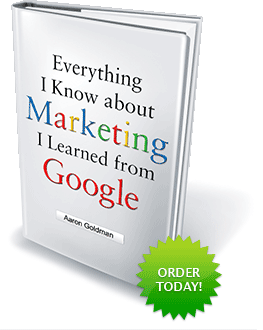Esco Strong
Director of Analytics
Microsoft
3/4/10
How do you think about attribution?
There’s a new analogy I’ve been using and it’s football players. The offensive linemen are in the trenches doing the dirty work, blocking and shoving. [But] when you look at the box score [they don’t show up]. The idea [with attribution] is not to take credit away from the quarterback or receivers or running backs but understand that there are guys out there that don’t show up statistically that have a big contribution.
Upper funnel behavior (which, by the way, doesn’t have to be defined by channel) that moves consumers from awareness to consideration may not score points [ie, directly cause the purchase]. But if we focused just on scoring points, you’d have a team of only backs and receivers and wouldn’t win very many games.
Why is this concept so hard for marketers and agencies to wrap their heads around?
Digital marketing is still a young business. It was built up very quickly with the promise of true accountability. Originally [all that accountability was placed on] the last ad.
So there’s lots of inertia, which can be difficult to overcome. All the billing systems are based on the last ad (for performance media buys). [But] people are starting to realize it can be better. [And] it’s still better than broadcast with its panel-based measurement.
The hyperfocus on last ad does not enable branding. The [initial] growth of digital was direct response so the last ad [model] made sense. But we’re shifting away [from that model].
It’s like the office space example. If I came in and said, “Hey, let’s move all the desks around because we’re not in an optimal arrangement,” people may get it but they won’t move until they have proof that the new arrangement will be better. The onus is on technology to come up with a way to crack that.
How can technology help?
[At Microsoft, we have an] Engagement Mapping [product in our Atlas Media Console that] creates a scalable platform for measuring cross-channel apples-to-apples and provide ROI data that is actionable.
You need settings to inform multi-channel attribution, [though]. What’s the value of a click vs. a view? Rich Media vs. Video? Interaction vs. Click? You can do a search and display synergy analysis to determine the value of the click and the view [but it’s more complex]. Where people want to get to is for their individual vertical or campaign or sale type and [make sure] they’re using the best custom settings and optimize over time.
Will we ever get to the point where we can take people out of the equation?
No. There’s [both] art and science involved. Our industry always requires a little creativity. It’s not just a math problem. Advertising is a bit of a moving target.
When running these attribution models, do you typically find that search has been getting too much credit?
Saying that is complex. 1) It’s relative to the investment. What you spend on search should depend on what you spend on other channels. 2) Some SEM is upper-funnel.
Pretty much all search is driven by another channel. Even within the search silo, [though,] advertisers cut non-branded [upper-funnel] terms in favor of navigational branded terms that get credit [for the sales].
[Generally speaking], I’d say 5-30% is the range of credit that gets shifted away from search [when we run the Engagement Mapping analysis]. We have an Alltel case study in which search lost 60% and display gained 30%. [The reason it’s not a 1-to-1 correlation is a] function of the overlap between channels.
Final thoughts?
As an advertiser becomes larger and reaches more users across diverse media [channels], the attribution problem becomes larger. The sales funnel is a tried-and-true concept in marketing. Some people think it’s not applicable to digital. [But] digital is just another citizen in the ecosystem.
Different publishers reach consumers at different stages. Some sites reach people 15-30 days prior to purchase like social media and portals. Down the funnel are the contextual and content sites like sports, travel, and shopping. [Then you] close the deal with ad networks and search.
If you believe in the purchase funnel, cross-channel attribution is important because you need to understand the impact of each touchpoint throughout the funnel. [After doing careful attribution analysis you realize] you can’t starve either end of the funnel.






